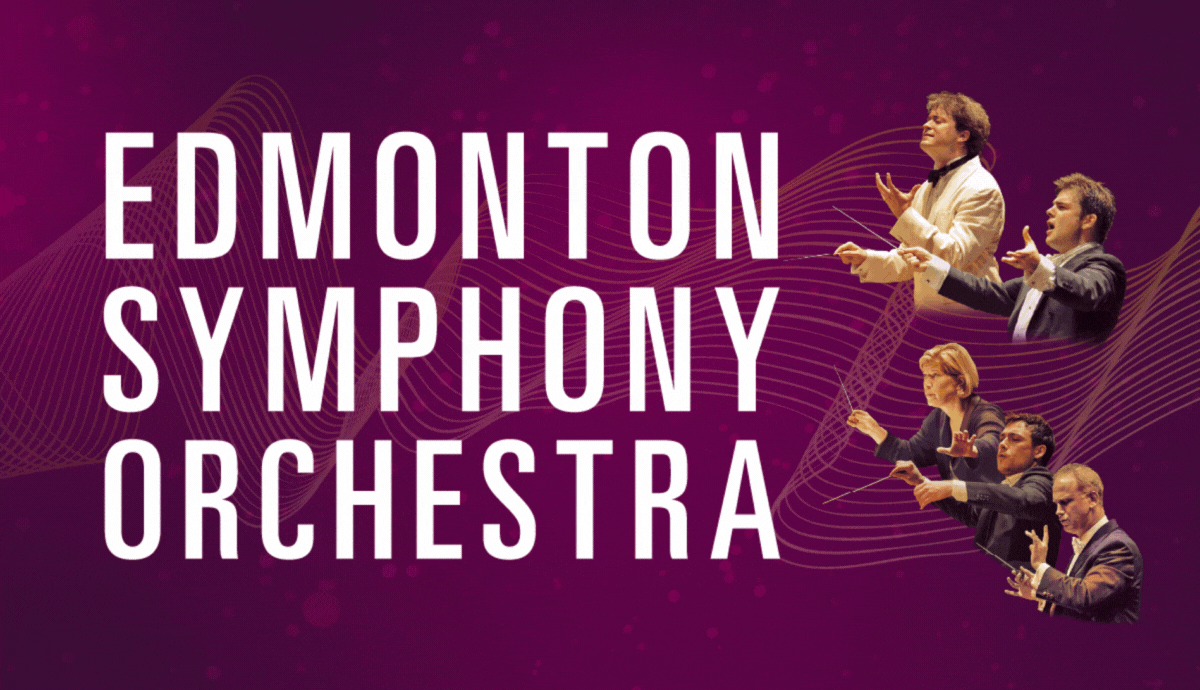A History of the Waltz
April 29, 2024

By D.T. Baker
There are very few dances (I’m looking at you, tango) that evoke extra-musical images like the waltz. And two impressive 20th-century works to be presented by the Edmonton Symphony Orchestra May 17 to 19 demonstrate that. So, let’s take a look at how that works.
It is likely that shortly after proto-humans learned to walk, they started to dance – it’s just that deeply embedded in our DNA. And throughout every culture in the world, folks have danced – which is how we got folk dances, naturally. Well, the origins of the waltz lie in a folk dance from the German-speaking world, called the Ländler. And like many cultural touchpoints that become fashionable, the waltz gained fame (and fans) because it was considered scandalous in the beginning.
Polite society in the late 18th and early 19th centuries already had a perfectly acceptable dance in 3/4 time. It was called the minuet. And one of the reasons it was accepted in those rather more proscriptive days was that the Minuet was danced in a group. Even most folk dances were like that – think of today’s square dancing, for example. Partners would begin, but would break off to dance with others, and actual physical contact was limited.
But not the waltz. You danced the waltz as a couple, and not only that, you were in constant physical contact with one’s partner. That it was deemed too risqué for the upper class only made it the latest craze. And, just like rock & roll became par for the course after its initial condemnation, the waltz would soon enter the mainstream. “The people of Vienna were in my time (the 1780s) dancing mad,” wrote an Irish visitor in the city, tenor Michael Kelly.
Enter the Strausses, and their competitors. Johann Strauss Sr. (1804-1849) was a Viennese musician, composer, and conductor who began a very successful business in presenting evenings of dance. At first, he worked with a partner, Joseph Lanner, but they were soon competitors. Strauss triumphed, and with the waltz now fashionable, he made his fortune catering to the dance-mad people of Vienna. “In every house, on every piano in Vienna lie Strauss waltzes,” wrote a French journalist in 1852.
Johann Strauss Sr. forbade his children to follow his footsteps, and at least three of them did just that – most famously his eponymous son. Viennese balls featured more than just waltzes, of course. There were polkas, quadrilles, galops. But keep in mind that Johann Strauss Jr. (1825-1899) would earn the nickname “the waltz king,” not “the waltz, polka, quadrille, and galop king.”
At its height, the Strauss family (led by Johann Jr., but supplemented by brothers Eduard and Josef) was employing over 200 musicians for as many as six balls a night. Johann Jr. went on tour, conquering city after city across Europe, and North America. And as always, it was with the waltz. He wrote hundreds of them, and the breadth, quality, and beauty of orchestration among them is, truly, astounding. A Strauss waltz was often a masterpiece in miniature, and even the most dyspeptic of judges, among them English critic Henry Fothergill Chorley and German composer Johannes Brahms, were great admirers.
The Viennese waltz was a distinct form from, say, the many waltzes for piano by Chopin. A slow introduction allows a gentleman to ask a lady to dance. The waltz proper usually had two contrasting main themes which alternated, leading to an appropriately whirling conclusion. As the 20th century dawned, and the political landscape of Europe began an inescapable change that would lead it into war by 1914, the Viennese waltz as perfected by Johann Strauss Jr. came to symbolize the Hapsburg Empire’s height. Even today, when we think of a waltz, how many of us can escape the image of a glittering ballroom filled with uniformed gentlemen and ladies with radiant gowns aswirl?
As far back as 1906, only seven years after the death of the waltz king, Maurice Ravel conceived of the idea of a work inspired by his own admiration for Strauss. He told a friend of his designs on a grand waltz to be called Vienne (the French name for Vienna). Following the success of Ravel’s ballet for the Paris-based Russian troupe Ballets russes, Daphnis et Chloé (1912), Ravel had hopes of having his Vienne choreographed for the troupe. The outbreak of World War One, pitting France and many other nations on the opposing side of Austria, made Ravel’s notion “inappropriate to the demands of the time,” in his own words. Following the war, and the decision by Ballet russes director Sergei Diaghilev not to present Ravel’s work, the composer re-thought his piece.
Now titled La Valse, a “choreographic poem,” the work finally premiered in 1920, two years after the end of the war. “Ravel disliked political interpretations of La Valse,” writes Gerald Larner in his biography of Ravel. “He was always at pains to point out that it was written for the stage and had nothing to do with either dancing on a volcano at the end of the Second Empire or the pitiable state of Vienna after the war.” But such associations were inevitable across a continent so recently rent by the horrors of the conflict. Ravel had tried several times to enlist in the French army himself, becoming an ambulance driver, and given how the Weimar Republic’s own cultural underground used the waltz form as a symbol (often satirically) of a now-dead empire, it was only natural that Ravel’s work would echo in contemporary ears in ways he may not have intended, but proved unavoidable nonetheless. Even today, as we will hear in the Winspear Centre on May 17-19, this great work has the feel of trying to reach back to a time and place that proves unattainable.
Leaping ahead only a couple of decades past Ravel’s La Valse, we encounter the great Russian composer and pianist Sergei Rachmaninoff. The year is 1941, and, now settled in the United States, Rachmaninoff – like Ravel – had tried to interest another Russian choreographer, Mikhail Fokine, in a three-movement dance piece to be called Fantastic Dances. Like Ravel being turned down by Diaghilev, so Fokine declined to use Rachmaninoff’s work.
Rachmaninoff re-titled the work Symphonic Dances, and it would prove to be his last work for orchestra. For its central movement, Rachmaninoff gives us a waltz. And while one cannot help but hear the distant echoes of Strauss’ Vienna in this music as well, Rachmaninoff’s waltz is a more macabre and haunting one. But even half a century after the Hapsburgs, with a second world war begun in Europe and soon to sweep the U.S. back into the fray, critics heard the music’s Viennese roots. Critic Olin Downes wrote, “The second Dance begins with a muted summons, or evocation, of the brass, a motto repeated in certain places, and for the rest there are sensuous melodies, sometimes bitter-sweet, sometimes to a Viennese lilt – and Vienna is gone.”
Of course, Vienna is not gone, but the Vienna of the Strauss waltz certainly is. But so great was the waltz’s impact that we understand exactly what Downes was saying. Just as we understand what Ravel and Rachmaninoff are saying with their imaginative – even provocative – use of the waltz. Michael Stern returns to conduct this concert full of symbolism and brilliant orchestral music.



